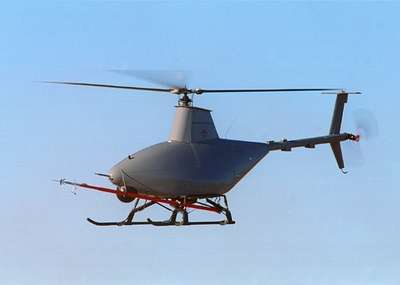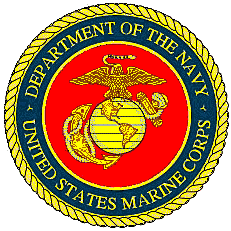Fri, Apr 18, 2003
Northrop Grumman Corporation's Integrated Systems sector
continued its successful flight testing of the U.S. Navy's RQ-8A
Fire Scout vertical takeoff and landing tactical unmanned aerial
vehicle in March with the first flight fully operated from the U.S.
Marine Corps' (USMC) S-788, a HMMWV-mounted ground control station
(GCS).

Conducted at the Webster Field annex of Naval Air Station
Patuxent River (MD), the flight fulfilled a key program test
objective of demonstrating Fire Scout operation by both U.S. Navy
and USMC ground control stations. (Fire Scout flew its first flight
operated by the Navy's S-280 GCS February 10.)
The S-788-operated flight was one of two Fire Scout flights
conducted on the same day. The first flight, a 20-minute
demonstration flight for senior U.S. Army aviation leadership, was
operated from the Navy's S-280 GCS. Less than an hour later, the
Fire Scout was launched for a functional check flight under the
control of the S-788 GCS. The back-to-back test flights marked the
first time that Fire Scout flights were operated from Marine Corps
and Navy ground control stations on the same day.

"The short turnaround time between flights and the ease of
switching from Navy ground control to Marine Corps ground control
provided a compelling demonstration of the robustness and
flexibility of the Fire Scout system design," said T. Scott
Winship, Northrop Grumman's Fire Scout program manager. "These test
results reinforce our confidence in Fire Scout's ability to provide
high-value support for critical Navy and Marine Corps
missions."
 During
the Marine Corps-controlled flight, the S-788 GCS used its tactical
control datalink to uplink payload command and control to Fire
Scout and to downlink imagery. The ARC-210 datalink was used for
air vehicle command and control. Use of this command and control
software continues to reduce risk as the system is prepared to
qualify and test the tactical control system software during flight
test later this spring.
During
the Marine Corps-controlled flight, the S-788 GCS used its tactical
control datalink to uplink payload command and control to Fire
Scout and to downlink imagery. The ARC-210 datalink was used for
air vehicle command and control. Use of this command and control
software continues to reduce risk as the system is prepared to
qualify and test the tactical control system software during flight
test later this spring.
As in all previous Fire Scout flight tests, the USMC and Navy
test flights were fully autonomous missions that included vertical
takeoff, accurate navigation, full payload operation and return to
a predetermined hover point in preparation for landing, all without
operator intervention.
More News
From 2023 (YouTube Edition): "Ain’t Your Daddy’s Super Cub”—Don Wade Co-owned by Don and Ron Wade—the former of Don’s Dream Machines, a storied >[...]
Pilot-Rated Passenger Reported That The Pilot Did Not Adequately “Round Out” The Landing Flare And The Airplane Bounced And Yawed To The Right Analysis: The pilot state>[...]
Dead Reckoning Dead reckoning, as applied to flying, is the navigation of an airplane solely by means of computations based on airspeed, course, heading, wind direction, and speed,>[...]
Aero Linx: Lake Amphibian Club This website is created and sponsored by the Lake Amphibian Club, to help spread the word about these wonderful, versatile amphibians that can land j>[...]
“I am deeply honored to be sworn in as NASA administrator. NASA’s mission is as imperative and urgent as ever — to push the boundaries of human exploration, ignit>[...]
 Classic Aero-TV: In Praise of Alabamas Patriot Aircraft USA
Classic Aero-TV: In Praise of Alabamas Patriot Aircraft USA NTSB Final Report: Cirrus Design Corp SR22
NTSB Final Report: Cirrus Design Corp SR22 ANN's Daily Aero-Term (12.21.25): Dead Reckoning
ANN's Daily Aero-Term (12.21.25): Dead Reckoning ANN's Daily Aero-Linx (12.21.25)
ANN's Daily Aero-Linx (12.21.25) Aero-News: Quote of the Day (12.21.25)
Aero-News: Quote of the Day (12.21.25)





